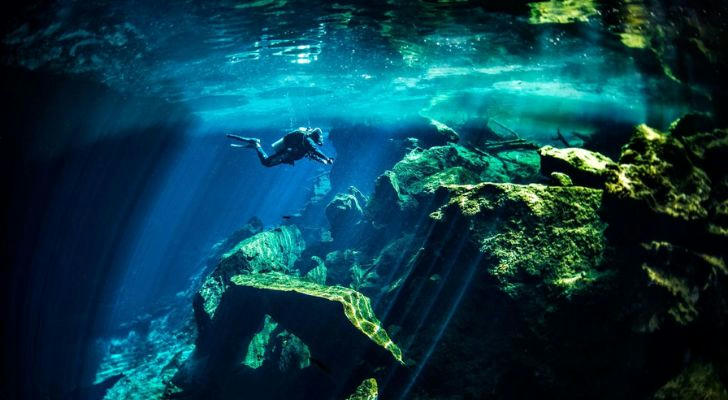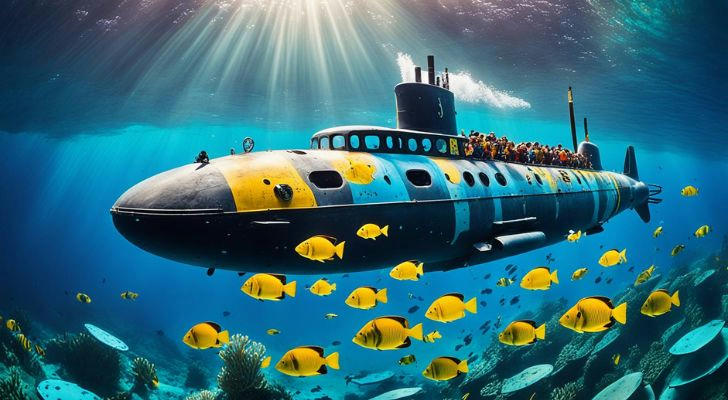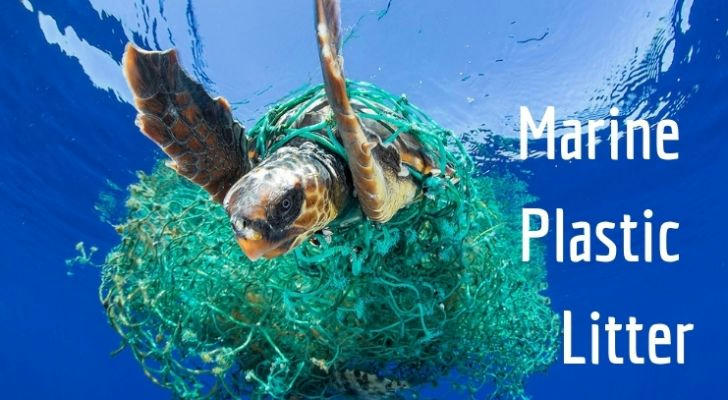The Allure of Underwater Exploration: America's Fascination with the Ocean Depths
Introduction
Underwater exploration has captivated Americans for decades, offering a thrilling mix of adventure, discovery, and environmental stewardship. From recreational diving to deep-sea expeditions, the ocean's depths hold endless fascination. This article explores the growing popularity of underwater exploration in the U.S., its cultural impact, and practical tips for getting started. It also provides additional insights into how individuals can engage responsibly in underwater exploration while contributing to marine conservation.

I. The History of Underwater Exploration
Early Expeditions and Technological Advances
Underwater exploration experienced significant development in the 20th century, beginning with the invention of SCUBA (Self-Contained Underwater Breathing Apparatus) gear. Pioneers like Jacques Cousteau popularized diving through documentaries such as The Silent World, sparking widespread interest in ocean exploration. Today, advancements in submersibles, remotely operated vehicles (ROVs), and underwater drones have opened new frontiers, making exploration more accessible to both researchers and enthusiasts.
According to the National Oceanic and Atmospheric Administration (NOAA), advances in deep-sea submersible technology have made it possible to explore oceanic depths previously unreachable, uncovering new species and geological formations.
II. Forms of Underwater Exploration
Recreational Diving
Recreational diving remains one of the most accessible and popular forms of underwater exploration. Destinations like the Florida Keys, the Great Barrier Reef, and California's kelp forests attract divers from around the world. These areas offer an opportunity to experience the vibrant marine life and unique underwater ecosystems.
How to Get Started:
Certification: Enroll in a PADI (Professional Association of Diving Instructors) or NAUI (National Association of Underwater Instructors) course for basic diving certification.
Gear: Invest in quality diving gear such as a mask, snorkel, fins, and wetsuit. The initial cost for recreational diving equipment ranges from $500 to $1,000.
Community: Join local dive clubs and organizations for support, access to guided dives, and safety tips. Many clubs also offer discounts on gear and trips.
Shipwreck Exploration
Exploring shipwrecks is an exciting way to combine history with adventure. Well-known sites like the Titanic, as well as local wrecks off the East Coast, draw divers and historians interested in uncovering historical artifacts and solving maritime mysteries.
How to Get Involved:
Specialized Training: Take wreck diving courses to ensure safety and proper diving techniques when exploring these often complex sites.
Research: Use NOAA’s databases and resources to locate local wrecks and learn about their history.
Networking: Connect with maritime history groups and dive organizations for opportunities to join expeditions and gain insights into historical shipwrecks.
Underwater Photography
Underwater photography is a specialized skill that combines diving with visual storytelling. It helps raise awareness about marine conservation and documents the beauty of ocean life. Photographers often share their work through social media, raising awareness of environmental issues affecting the oceans.
How to Get Started:
Gear: Invest in an underwater camera, such as a GoPro for beginners or more advanced equipment for professional photographers.
Training: Take underwater photography courses to learn essential techniques for capturing stunning images while respecting marine life.
Share: Post your photos on platforms like Instagram, YouTube, and photography communities to inspire others and promote marine conservation.
Deep-Sea Exploration
Deep-sea exploration is the ultimate frontier of underwater adventure. Using advanced submersibles and ROVs, deep-sea explorers venture into the abyss to discover new species, geological features, and ecosystems.
How to Get Involved:
Research Institutions: Volunteer with research organizations like the Woods Hole Oceanographic Institution, which conducts deep-sea expeditions.
Funding: Apply for grants, sponsorships, or crowdfunding to finance deep-sea exploration projects.
Collaboration: Partner with marine biologists, geologists, and other researchers to access state-of-the-art equipment and participate in collaborative research.

III. Cultural and Social Impact
The Romance of Adventure
Exploring the unknown has always been a part of human nature, and the ocean’s depths have long symbolized mystery and adventure. Water-based exploration offers Americans the chance to reconnect with nature, experience the thrill of discovery, and participate in an ongoing conversation about the world’s unexplored frontiers.
Tip: Start with local dive sites and gradually explore deeper and more challenging waters to build skills and experience.
Raising Environmental Awareness
Divers often become firsthand witnesses to the effects of environmental issues like ocean pollution, climate change, and coral reef degradation. Their personal experiences serve as a catalyst for raising awareness and fostering a commitment to marine conservation.
According to the NOAA, over 80% of marine pollution comes from land-based sources, making it crucial for explorers to share their findings and advocate for sustainable practices.
Tip: Follow eco-friendly practices, such as avoiding contact with marine life, using environmentally safe gear, and supporting marine conservation organizations.
The Role of Social Media
Social media platforms like Instagram, YouTube, and TikTok have played a major role in popularizing underwater exploration. The breathtaking content shared by divers and explorers helps inspire a new generation of enthusiasts while fostering a global community of like-minded individuals.
Tip: Share your underwater experiences and adventures online, whether through social media or a personal blog, to inspire others and build a network of fellow explorers.

IV. Barriers and Challenges
Technical and Equipment Requirements
Underwater exploration involves specialized training and gear. For recreational divers, initial costs for diving certification and equipment can range from $500 to $1,000, but deep-sea expeditions require significantly more investment, often upwards of $50,000 for submersibles and advanced technology.
Tip: Rent gear or try out introductory courses before making large financial investments. Seek mentorship from experienced divers and instructors.
Financial Costs
While recreational diving is affordable, deep-sea exploration can be prohibitively expensive. Costs for high-tech submersibles, research trips, and advanced diving gear can be astronomical.
Tip: Join dive clubs for discounts and access to shared equipment. Crowdfunding and grant applications can help finance larger exploration projects.
Environmental Impact
Water-based activities can have a significant impact on marine ecosystems if not conducted responsibly. Divers and explorers must be mindful of their actions, minimizing harm to fragile ecosystems such as coral reefs and underwater habitats.
Best Practices:
- Follow the "look but don't touch" rule to avoid disturbing marine life.
- Use eco-friendly, sustainable diving equipment.
- Participate in conservation efforts by supporting marine research initiatives.

V. The Future of Underwater Exploration
Technological Innovations
Advancements in underwater drones and submersibles are continuously making deep-sea exploration more accessible. These new technologies democratize ocean exploration, enabling researchers and hobbyists alike to engage in the discovery of previously unreachable locations.
Democratization of Exploration
As technology becomes more affordable and user-friendly, underwater exploration is expected to become more widespread. Affordable diving courses, accessible underwater drones, and advancements in remote sensing will make it easier for a wider range of individuals to explore the ocean’s depths.
Global Collaboration and Conservation
Marine conservation requires global cooperation. As the need for ocean preservation grows, international organizations, governments, and researchers are working together to ensure sustainable practices and promote policies that protect marine environments.
How You Can Contribute:
Join Projects: Participate in global marine research and conservation initiatives.
Advocate: Support policies that protect the ocean and its ecosystems, such as marine protected areas (MPAs).
Educate: Share your passion for the ocean with others, helping to spread awareness about the importance of marine conservation.
Conclusion
Underwater exploration offers a unique blend of adventure, discovery, and environmental stewardship. Whether you're just starting out as a recreational diver or aspiring to engage in deep-sea research, the ocean’s depths are waiting to be explored. By following responsible practices and engaging in conservation efforts, you can join the ranks of modern-day explorers, helping to protect the ocean for future generations. With new technologies making underwater exploration more accessible than ever, now is the perfect time to dive into the mysteries of the ocean.
